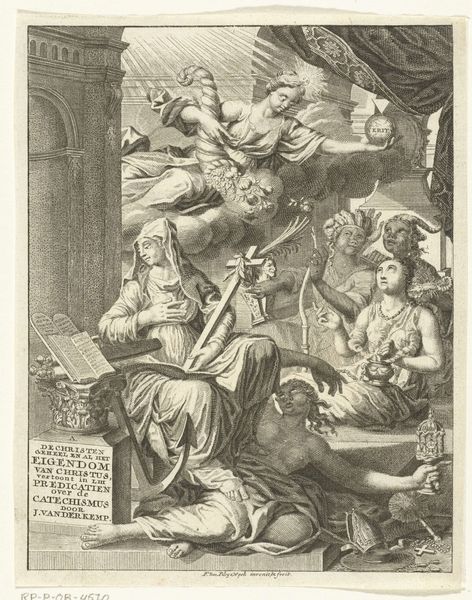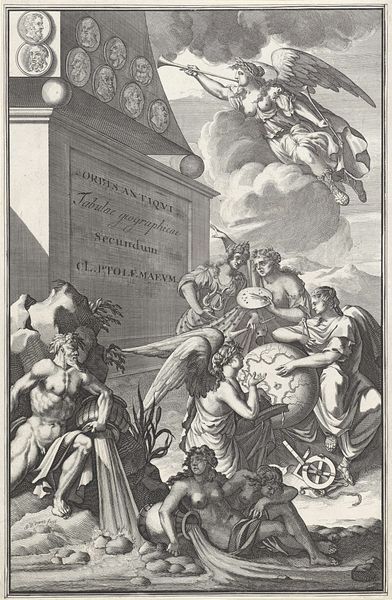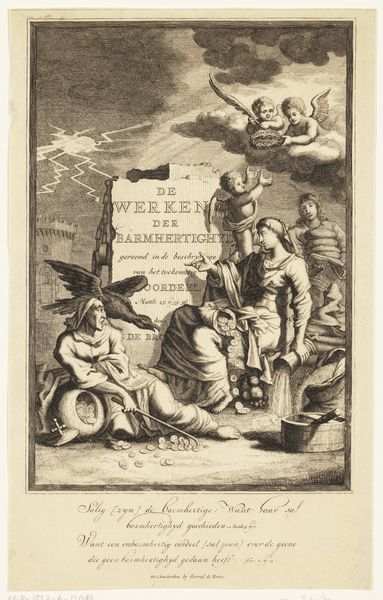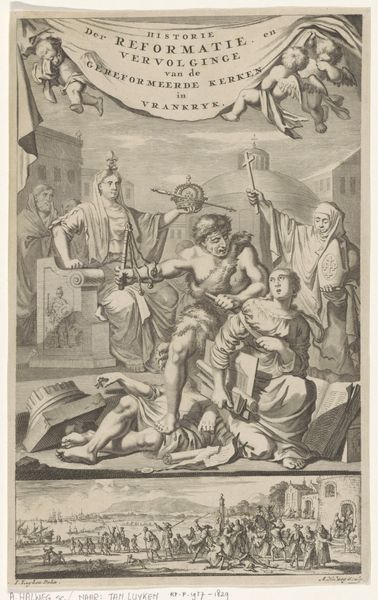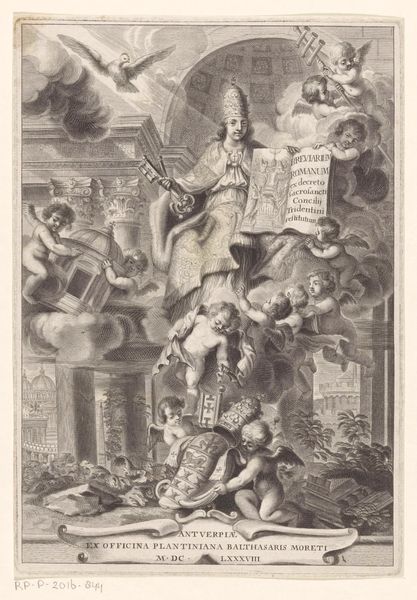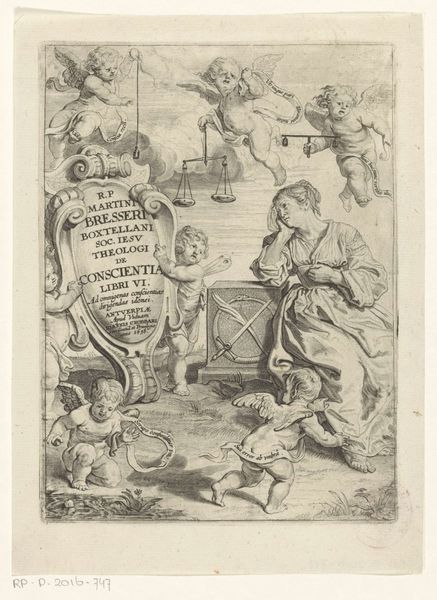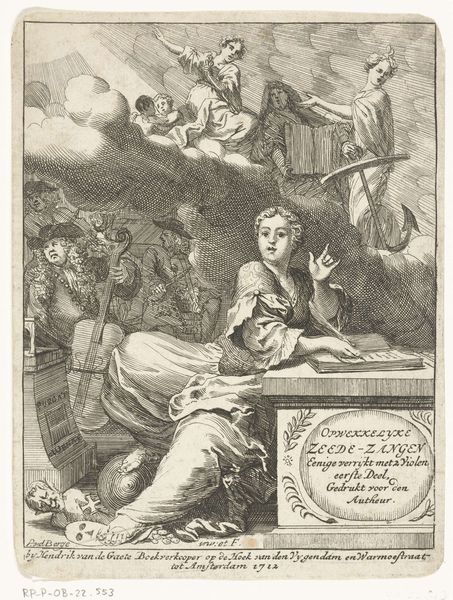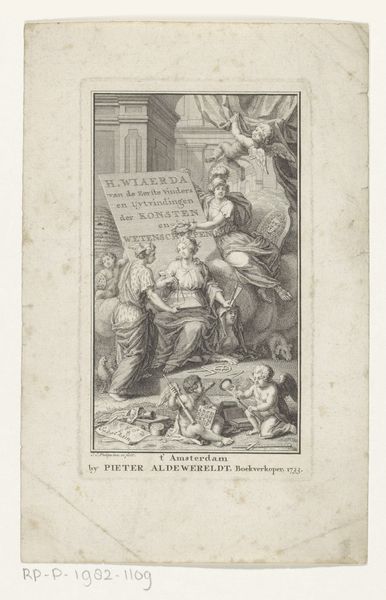
print, engraving
#
allegory
#
baroque
# print
#
old engraving style
#
figuration
#
line
#
history-painting
#
engraving
Dimensions: height 278 mm, width 183 mm
Copyright: Rijks Museum: Open Domain
Editor: So, here we have Romeyn de Hooghe’s engraving, “Allegorical figure with Jewish man” from 1686. The baroque style makes the allegorical figures incredibly theatrical. There is a lot going on! How do you begin to unpack something like this? Curator: Well, darling, it's a visual feast, isn't it? To me, it’s like stumbling into a vivid dream…a slightly chaotic one. My eyes dart all over, and I find myself lost in trying to understand the relationship between all of these characters, but if I consider where this was made, I ask myself "who is being presented, and who is missing"? Editor: So it's about context, but who are these men at the bottom? And how do they relate to the figures above? Curator: Exactly. What's so fascinating is the way de Hooghe blends classical allegory, like the lion and the angel, with contemporary social commentary. Look at the central inscription: "Opera Joannis Ligtfooti Omnia" — the complete works of John Lightfoot. See how the figure of the "Jewish man" contrasts so harshly with this allegory of the pure, scholarly angel hovering above? I wonder, is de Hooghe praising Lightfoot, or using the figure of the man below to point to something insidious? Editor: So maybe not as straightforward a portrait as I first thought? This makes me think about whose stories we choose to celebrate and why. Curator: Precisely! These kinds of engravings often present such complexity; offering a lens into not just what, but *who*, society at that time deemed important - or worthy of scrutiny. Isn’t it marvelous? A world contained within lines. Editor: Absolutely marvelous! It really hits home that even a seemingly straightforward image holds so much more depth than you initially see.
Comments
No comments
Be the first to comment and join the conversation on the ultimate creative platform.

